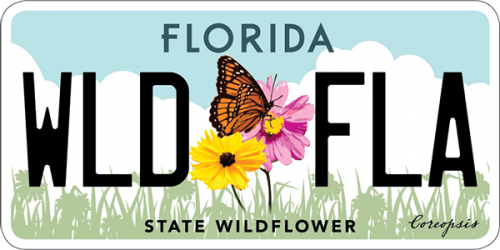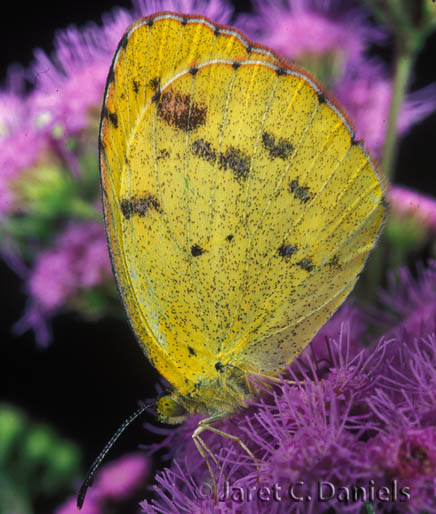- Family name: Pieridae/Whites and Sulphurs
- General description: yellow to pale whitish-yellow (females) with black forewing apex; hindwing with narrow black margin, often reduced to series of black patches in females. Ventral hindwing yellow to pale whitish-yellow with two tiny black basal spots, small irregular dark pattern elements, and a pinkish patch (sometimes absent) along the upper margin. Winter form (dry season) individuals darker and more heavily patterned below with dark pink wing fringes.
- Field Marks: yellow with black forewing apex; ventral hindwing with two tiny black basal spots
- Sexes: appear similar
- Wingspan: 25-35 mm
- Life Cycle: Egg: whitish-yellow, spindle-shaped, laid singly on host leaves Mature larva: green with narrow lateral white stripe Chrysalis: green
- Number of Generations: multiple
- Flight Season: All year
- Abundance: Common
- Habitat: forest margins, disturbed sites, fields, roadsides
- Larval Host Plants: Partridge pea (Cassia fasciculata), sensitive pea (Cassia nictitans)
- Similar Species: No similar species
- Additional Information: Adults overwinter in reproductive diapause. Often found alongside Barred Sulphur and Dainty Sulphur. Range is limited in Arizona and New Mexico.
- Range in Florida
 The Florida Wildflowers & Butterflies projects at the Florida Museum are sponsored in part by the State of Florida and the Florida Wildflower Foundation, Inc.
The Florida Wildflowers & Butterflies projects at the Florida Museum are sponsored in part by the State of Florida and the Florida Wildflower Foundation, Inc.
